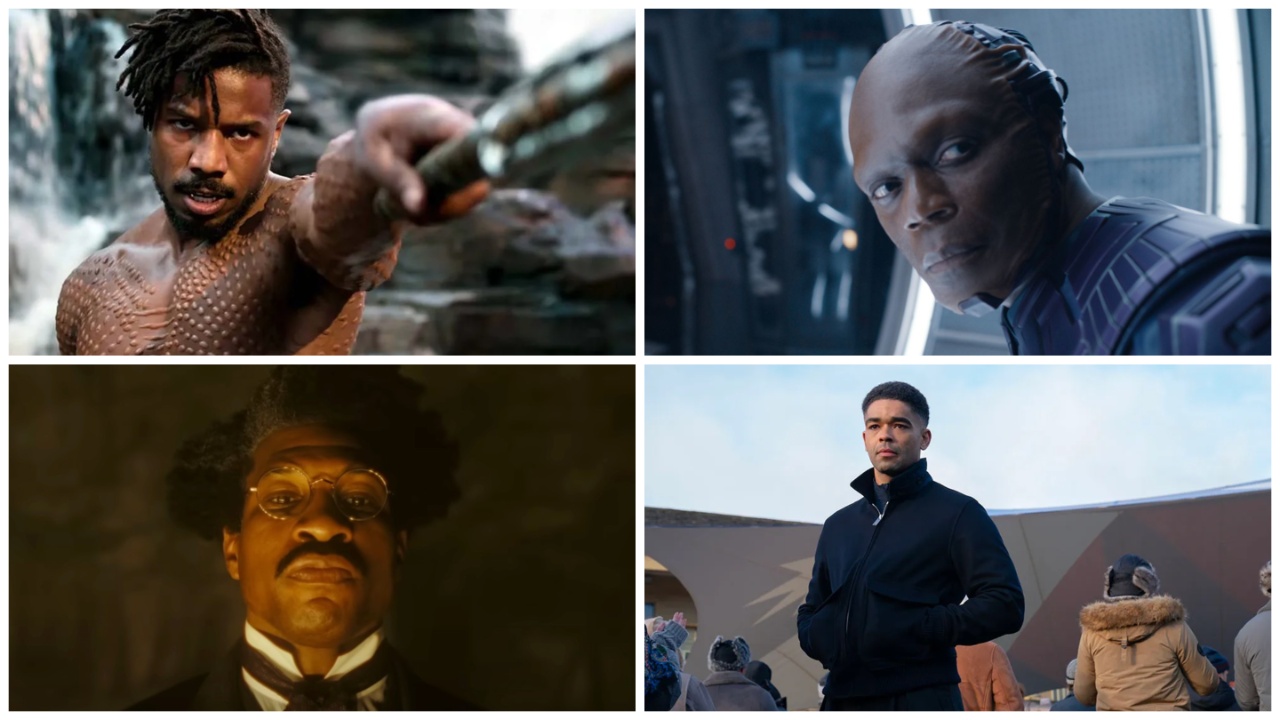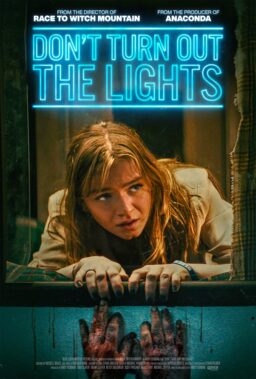For decades, Hollywood upheld and championed a certain ideal of masculinity. Toxic masculinity permeated our screens with scenes of societal ills like sexual harassment, senseless violence, and blatant bigotry. Even cult classics like "Revenge of the Nerds" are infamous for depicting rampant misogyny, such as the now commonly referred rape scene where Robert Carradine's character Lewis stole Stan's costume and impersonated him, so that Stan's girlfriend Betty would have sex with him. The idea of male cultural superiority and unquestionable virtue at the time and many decades later allowed scenes like this to be justified and accepted among a broader audience while victims of such events were left in the dark.
With contemporary scrutiny of these scenes, there is now a tiring refrain: Men aren't men anymore, men are snowflakes, masculinity is dead. We've heard it all before. None of these statements are true. Men are still men, but the way they express masculinity has changed. Contemporary cinema, similarly, reflects that change in our society.
Gone are the days of emotionally repressed white action heroes of the 80s and 90s with bulging muscles and cold stares. The modern leading man has an emotional capacity as big as his muscles or lack thereof. Even James Bond, a man of mystery and intrigue, has exchanged his womanizing machismo for the tenderness and self-sacrifice of fatherhood, as seen in Daniel Craig's latest heroic outing "No Time to Die." As coined by Robert Connell, "hegemonic masculinity" is the most prevailing form of masculinity legitimizing white men's dominant position in a heteronormative society for demonstrating their superiority, physical strength, and lack of emotions.
Lately, works like "Baby Reindeer," "The Last Black Man in San Francisco," and "Rye Lane" have attempted to push back against hegemonic masculinity, ushering in a new era of male vulnerability.

This isn't to say that hegemonic masculinity doesn't exist in the world around us. We can see that evident in Richard Gadd's "Baby Reindeer," a fictionalized retelling of Gadd's own experience with a female stalker, as Jessica Gunning's character Martha fetishizes our protagonist's masculine features. With his manly hands and chiseled jawline, Gadd, in Martha's mind, is the pinnacle of what a man should be. However, her societal expectations and who his character actually is are on two opposite ends of the spectrum. Despite this, Gadd's character leans into this cultural norm as a majority of men do in reality.
To perform masculinity is to be socially accepted. Under these rules, men aren't weak; they neither falter nor succumb to outward forces even when those forces are against them. But this ideal isn't a reflection of reality. Men can be victims of the same patriarchal and chauvinistic systems they sought to uphold. Fear is the catalyst to maintain the status quo, and in Gadd's case, his performed masculinity stemmed from the vulnerability of enduring a sexual assault from another man in a position of power.
When a man stripped him of his strength and identity of manhood, he became powerless in a hurtful and extremely damaging situation. This tragic event can be even heavier in the presence of other men, leading the victimized to wonder what other men will think of them? Time and time again men bury these hurt emotions, performing masculinity like a clown with face paint dancing among a crowd of performers in the same makeup.
This fear of perception also manifested when Gadd's character falls in love with Nava Mau's character, Teri, a trans woman he met on a dating app. Instead of proclaiming his love from the rooftops, he hides it, scared of what other men might think of his sexuality. However, something unique about "Baby Reindeer" is that Gadd doesn't allow our protagonist to wallow in his perceived masculinity. He ebbs and flows between his trauma and change. He opens up to Teri about Martha and even takes her out in public to the bar where he worked, where people knew him. Although Gadd's character doesn't end the series with a tidy life wrapped up with a bow, we see him continue to try. Growth isn't linear, and it was wonderful to see that explored on screen.
Thankfully, "Baby Reindeer" doesn't exist in a vacuum. It isn't the only exploration of masculinity and vulnerability in the media, as we've seen an increase in POC and BIPOC stories being developed into the complex narratives they are. White men aren't the only ones allowed to be vulnerable. For example, Barry Jenkins, renowned for his ability to humanize his leading men, was a trailblazer in how audiences saw black men with his directorial hit "Moonlight." Jenkins presented a nuanced view of black masculinity that differed from the hypermasculine and womanizing portrayals of the 70s, 80s, 90s, and 00s. He explored how fear and shame can lead men to internalize their emotions, locking them up and throwing away the key. Trevante Rhodes's character, Black, is the epitome of performing masculinity. Like Gadd, Black's outward appearance did not reflect who he was internally, and only by reconnecting with his former love, Kevin, was he truly liberated.

Freedom, however, isn't confined to romantic intimacy; it also manifests in platonic closeness. When we look at films like Joe Talbot's "The Last Black Man in San Francisco," we see what masculinity can be between two black men when they support each other. The film follows Jimmie and his best friend, portrayed by Jonathan Majors, as they strive to reclaim Jimmie's family home in a rapidly gentrifying San Francisco. An image that always comes to mind when thinking about this film is the picture of Jimmie Fails, Jonathan Majors, and Danny Glover embraced in a warm and inviting hug. It's a hug symbolic of what every young black boy needed in his life, but never received.
Fails and Majors's characters exhibit a deep intimacy among black men that isn't normally shown on screen. They were more like brothers than friends. It felt reminiscent of the black power movement where fellow black people referred to each other as brother and sister. Fails and Majors's characters slept in the same room, shared deep emotional stories about their personal lives, and traveled together, either on the bus or on Fails's comically small skateboard. But their relationship and security in their masculinity clashed with the hyper-masculine men in their community. Jimmie's father, played by Rob Morgan, cannot connect with his son because he is too emotionally stunted to provide the relationship and support that Jimmie desires.
The boys on the block, portrayed by Jordan Gomes, Jeivon Parker, Isiain Lalime, Antoine Redus, and Jamal Trulove, mock the duo for not maintaining the tough facade of masculinity as they do—they're seen as soft. Despite this, both Fails and Majors find freedom and comfort within each other and the house they're trying to preserve. Because their freedom of expression is potent, it radiates out and pulls Jamal Trulove's character, Kofi, into their orbit. Around the duo, Kofi's masculine persona melts away. Kofi finds joy in being whole, although this moment is short-lived as he dies off-screen in a last-ditch effort to perform toxic masculinity. In the aftermath of his death, the boys on the block crumble. When Jimmie confronts the boys about Kofi's passing, their aggression turns into quiet tears. The mask of machismo falls, leaving only vulnerability.
Since the release of "The Last Black Man in San Francisco" in 2019, the filmmakers that have followed don't feel the need to build towards vulnerability; they start there. Raine Allen Miller's "Rye Lane," a budding romance between two Londoners after a chance encounter heals them both from heartbreak, is an excellent example, as the film opens with David Jonsson's character Dom crying in the bathroom. Within the first few minutes, Miller lets the audience know this isn't a British "Love Jones." Dom doesn't have the swagger of Larenz Tate's Darius Lovehall. He's an ordinary man with a full range of human emotions, and right now he's hurt.

If "Rye Lane" had been made in the '90s or early '00s, Dom's hurt feelings wouldn't have manifested as tears. He would have leaned into male stereotypes and cheated on his ex in retaliation or behaved violently towards his friend that she cheated on him with. Yet, here in the 2020s, Dom sits with how he feels and expresses his emotions in a healthy way. He doesn't lash out in anger or violence; he allows himself to be vulnerable, and in doing so, he meets someone new. This trend is also evident with William Jackson Harper's character, Marcus Watkins, in "Love Life."
Both Marcus and Dom are protagonists who deconstruct societal norms of what it means to be a man. As masculinity evolves, so will our social expectations. Academic author Joseph Gelfer describes a new model for understanding masculinities called the "five stages of masculinity." In the first stage, the problem of masculinity is acted out by people without any awareness or forethought. To understand manhood, we must accept that masculinity is not inherent but rather a social construct, and only then can we be free.
The critical acclaim for "Baby Reindeer," "The Last Black Man in San Francisco," and "Rye Lane" proves that audiences are hungry for this shift. We're no longer satisfied with one-dimensional leading men. We crave characters who grapple with vulnerability, complexity, and emotions that transcend traditional notions of manliness. They've shown us that manhood isn't a rigid set of rules, but a spectrum waiting to be explored. The future of cinema will be a genre-bending exploration delving into the emotional landscapes of men from different races, sexual orientations, and socioeconomic backgrounds. This shift isn't just about changing what we see on screen; it's about changing how we see ourselves and each other in the real world.











